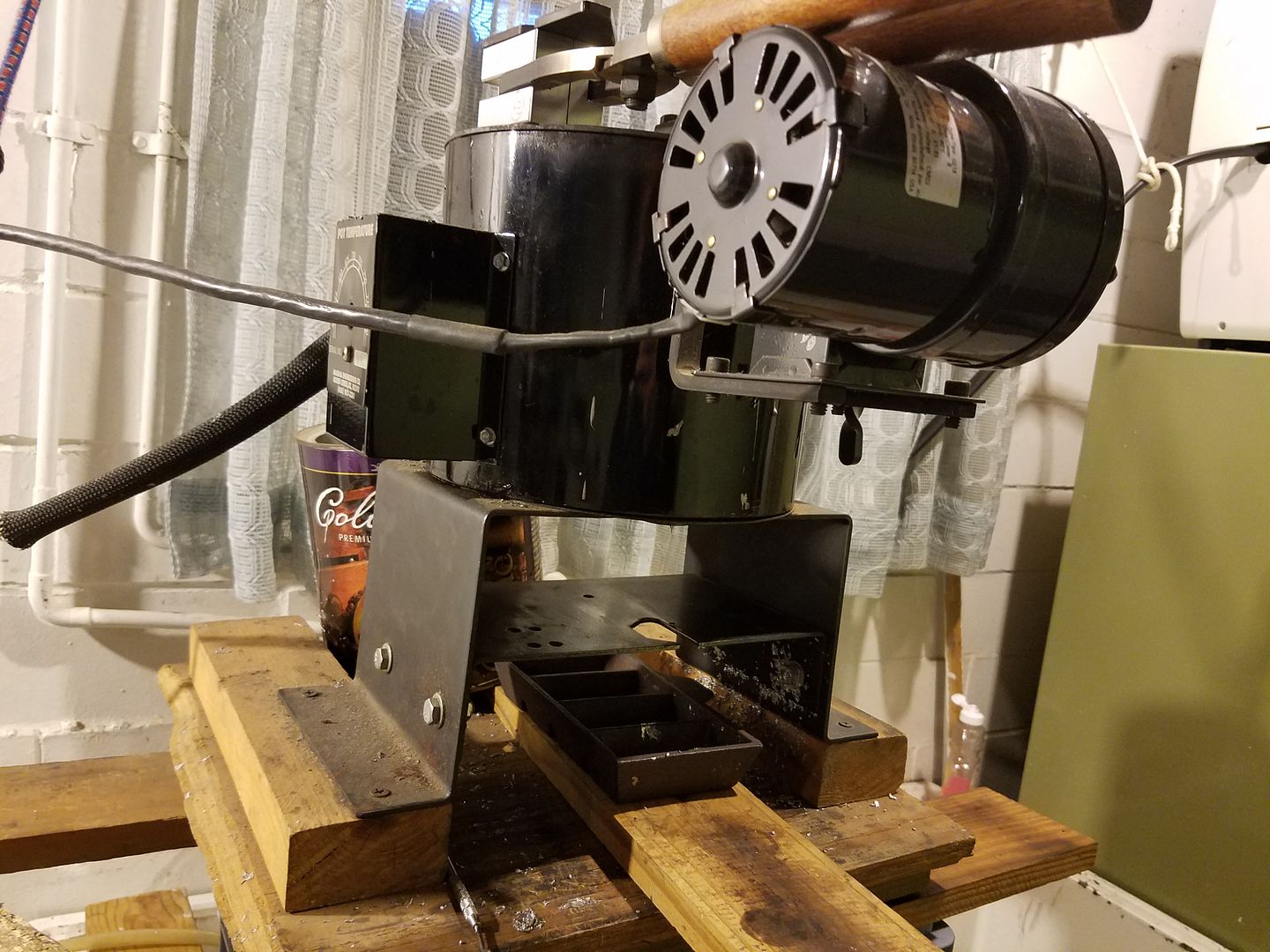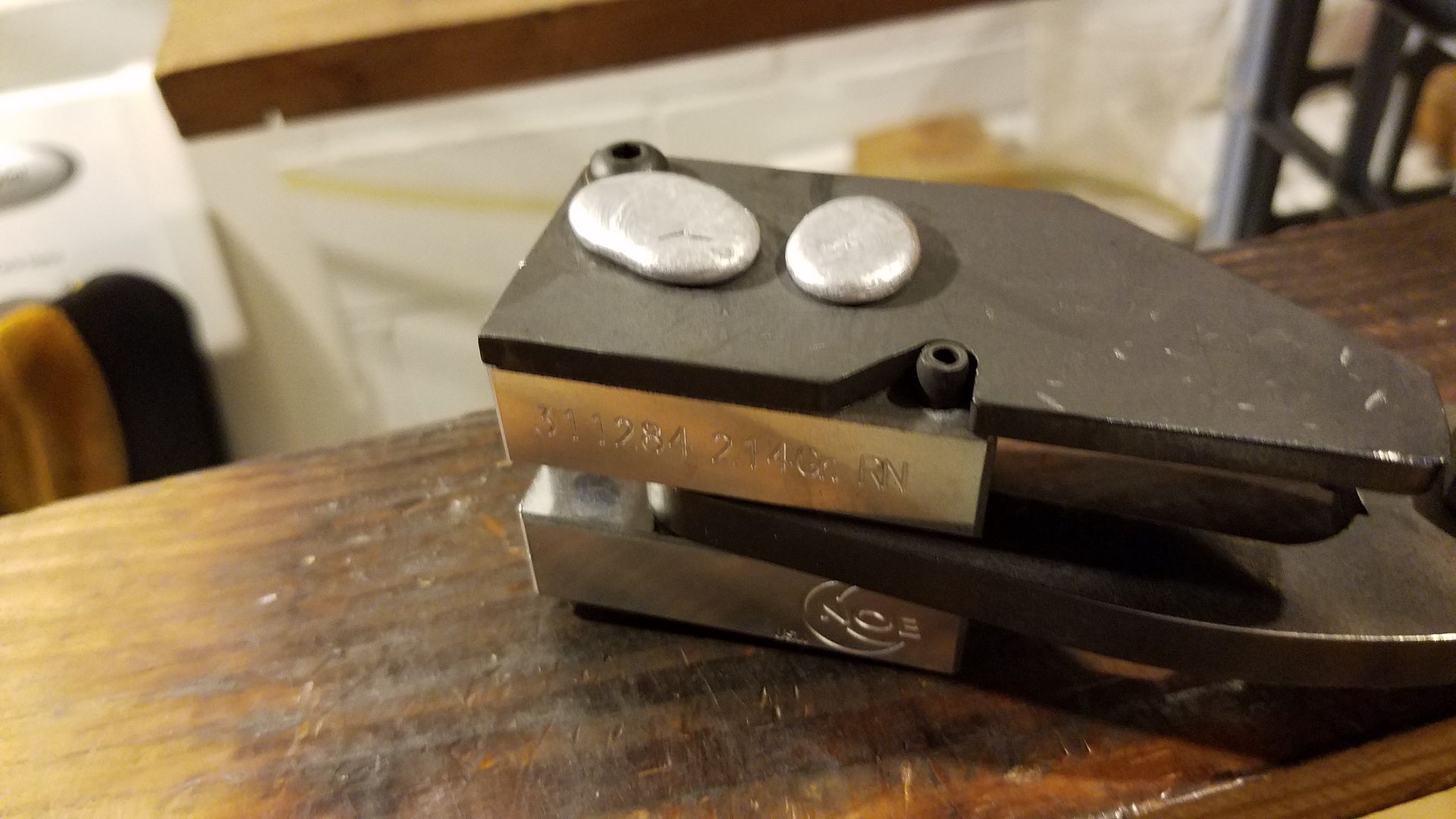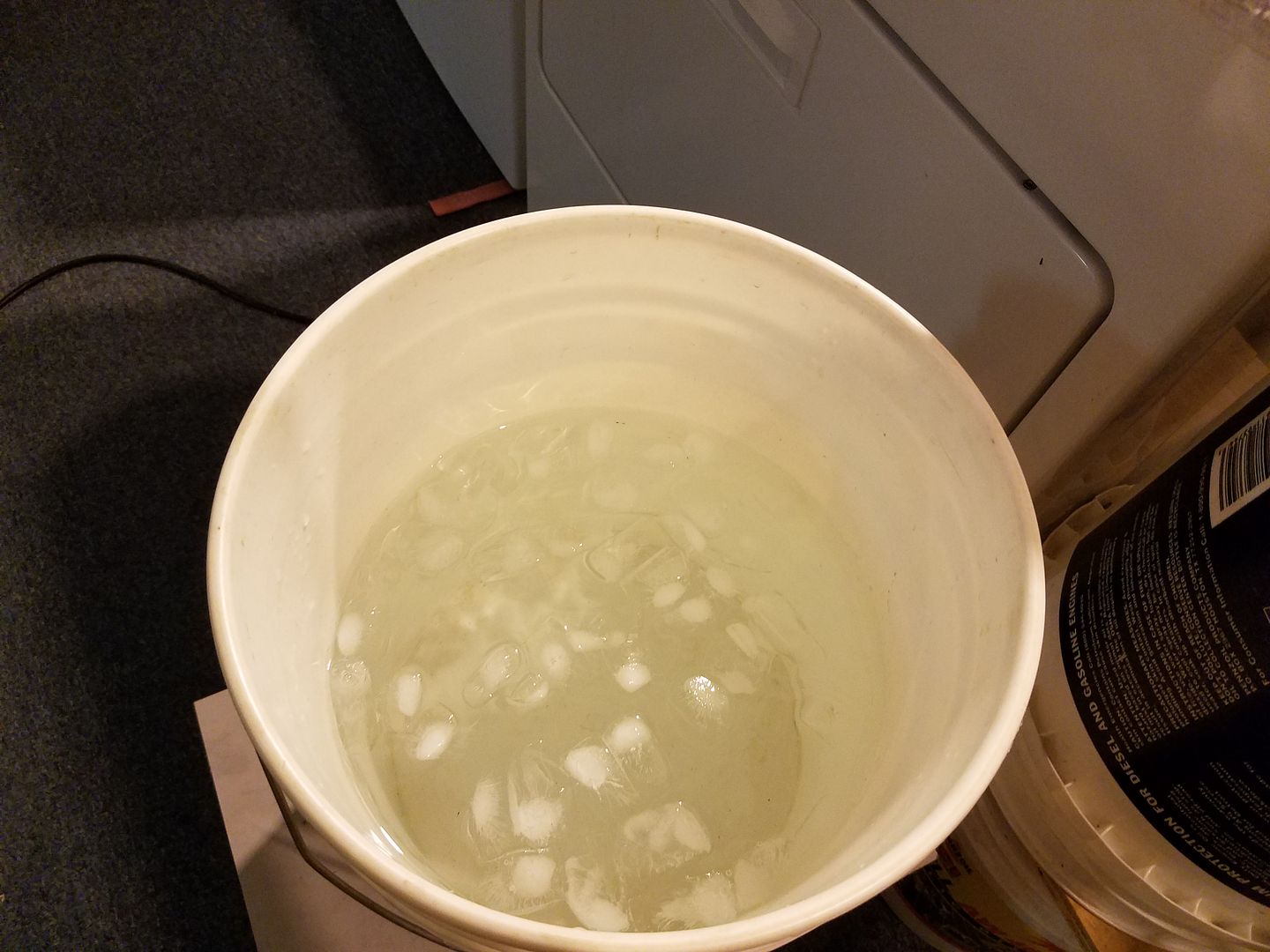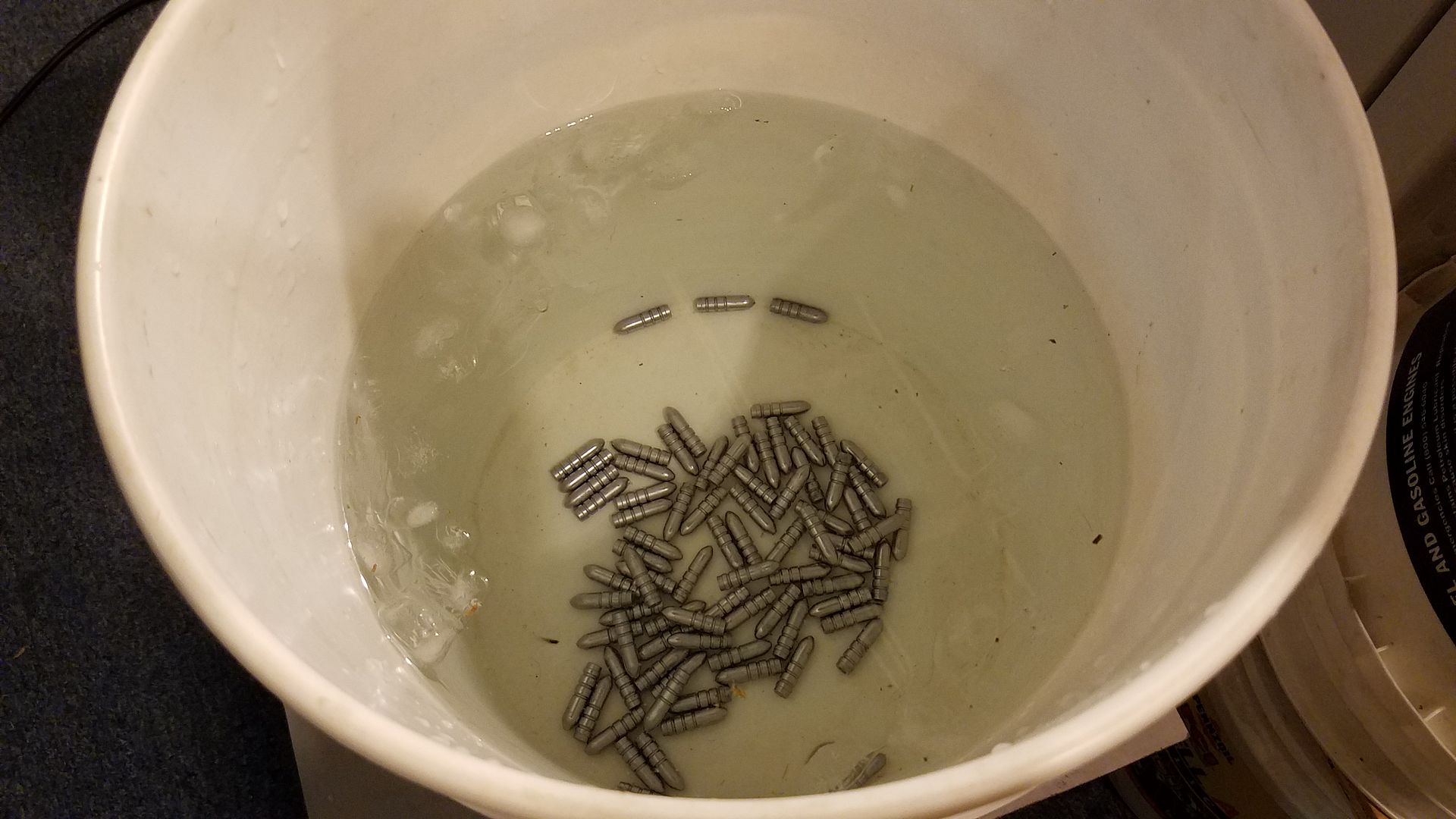You are using an out of date browser. It may not display this or other websites correctly.
You should upgrade or use an alternative browser.
You should upgrade or use an alternative browser.
Hard Ones
- Thread starter Creeker
- Start date
yodogsandman
Well-Known Member
Does anyone else use snow in the water in the winter?
What's the difference in BHN #s between ice water and say,room temp water?
I pretty much water quench(room temp)everything....folded towel in the bttm of my g-ma's enameled,going on 100 y.o. wash pan.Been that way for almost 40 years of casting.
Throwing ice or snow in there is plenty easy.
I pretty much water quench(room temp)everything....folded towel in the bttm of my g-ma's enameled,going on 100 y.o. wash pan.Been that way for almost 40 years of casting.
Throwing ice or snow in there is plenty easy.
Creeker
Well-Known Member
What's the difference in BHN #s between ice water and say,room temp water?
Keep in mind the temperature of the bullet when it enters the water will make a difference. 92-62 into room temperature water will go somewhere between 18 & 22. Same bullet, same temperature into ice water will go 25 to 30. None of this is set in stone because of many variables. Your mileage may differ.
KeithB
Resident Half Fast Machinist
I don't know how similar lead/tin alloys are to iron/carbon (steel) alloys when talking about quench hardening, but for steel the rate of cooling is the main determinant in the end hardness. The faster the object cools, the harder it gets. For plain carbon steel the fastest quench is brine (saltwater). The water that touches the object turns into a gas and slows the cooling rate. Adding salt helps break up the gas bubbles and allows for faster and more uniform cooling.
I repeat, I do not know if this holds true for lead/tin alloys, and I haven't ever tried it for bullets. I'm not claiming any special expertise at this.
I would also be sure to thoroughly rinse off the bullets to remove any dried salt crystals before doing any further processing.
I repeat, I do not know if this holds true for lead/tin alloys, and I haven't ever tried it for bullets. I'm not claiming any special expertise at this.
I would also be sure to thoroughly rinse off the bullets to remove any dried salt crystals before doing any further processing.
KHornet
Well-Known Member
For many years, I water dropped every thing. A couple of years ago, I started air
cooling hand gun bullets, and at around 12-14BH or less, have found that to be
more than adequate. For little rifle bullets 22-24's, I want hard, and always water
drop, for BH not less than 22, and higher is better. For big 45-70 Bullets, I want
them fairly soft, and normally air cool. For those inbetween, I am comfortable
water dropping and at some place between 16-18 BH. That works for me, but
may not be the best for other folks.
Paul
cooling hand gun bullets, and at around 12-14BH or less, have found that to be
more than adequate. For little rifle bullets 22-24's, I want hard, and always water
drop, for BH not less than 22, and higher is better. For big 45-70 Bullets, I want
them fairly soft, and normally air cool. For those inbetween, I am comfortable
water dropping and at some place between 16-18 BH. That works for me, but
may not be the best for other folks.
Paul
When I first started heat treating bullets I used a gas fired conventional cook oven from an RV. I did get harder bullets when I started using ice in the water but an interesting thing happened when I started using an electric convection oven. There was no difference in final hardness using cold tap water or ice added to chill the water further. I never did figure out why and settled on the convection oven being far more uniform in heating. That's an assumption on my part because I really don't know beyond the difference between ice water and tap water disappeared. Been a head scratcher for me ever since.
.
.
KeithB
Resident Half Fast Machinist
The reason many steel parts are harder at the surface is because the surface cools faster than the interior. Any part of the object that cools slower than the critical cooling rate will not get fully hardened. I've heard that any carbon steel object that is more than 1" (25mm) thick will not cool in the interior quickly enough to fully harden. The more highly alloyed the steel is the slower the object can cool and still get fully hardened. I think a carbon steel part the size of a bullet would through and not just surface harden.
Among the many reasons alloy steels were developed was that almost anything added to steel slows the critical cooling rate and allows for deeper hardening. For alloy steels such as 4140 oil quenching is used, and for highly alloyed steels such as High Speed Steel air cooling is adequate. The slower the quench, the less chance of warping or cracking.
Among the many reasons alloy steels were developed was that almost anything added to steel slows the critical cooling rate and allows for deeper hardening. For alloy steels such as 4140 oil quenching is used, and for highly alloyed steels such as High Speed Steel air cooling is adequate. The slower the quench, the less chance of warping or cracking.
In a phone call with RCBS (probably 30 years or more ago) they said they believed that water temp didn't matter. That's what led me to testing over and over again and I did get harder results with the ice water, every time. Right up until the same testing showed no difference when using the convection oven. I tell ya it's enough to make a guy cross eyed. This was all back when I believed harder was better and if ya weren't shooting diamonds it couldn't work. Extensive testing since has proven to me that harder than needed is detrimental to accuracy and can lead to leading.
.
.




